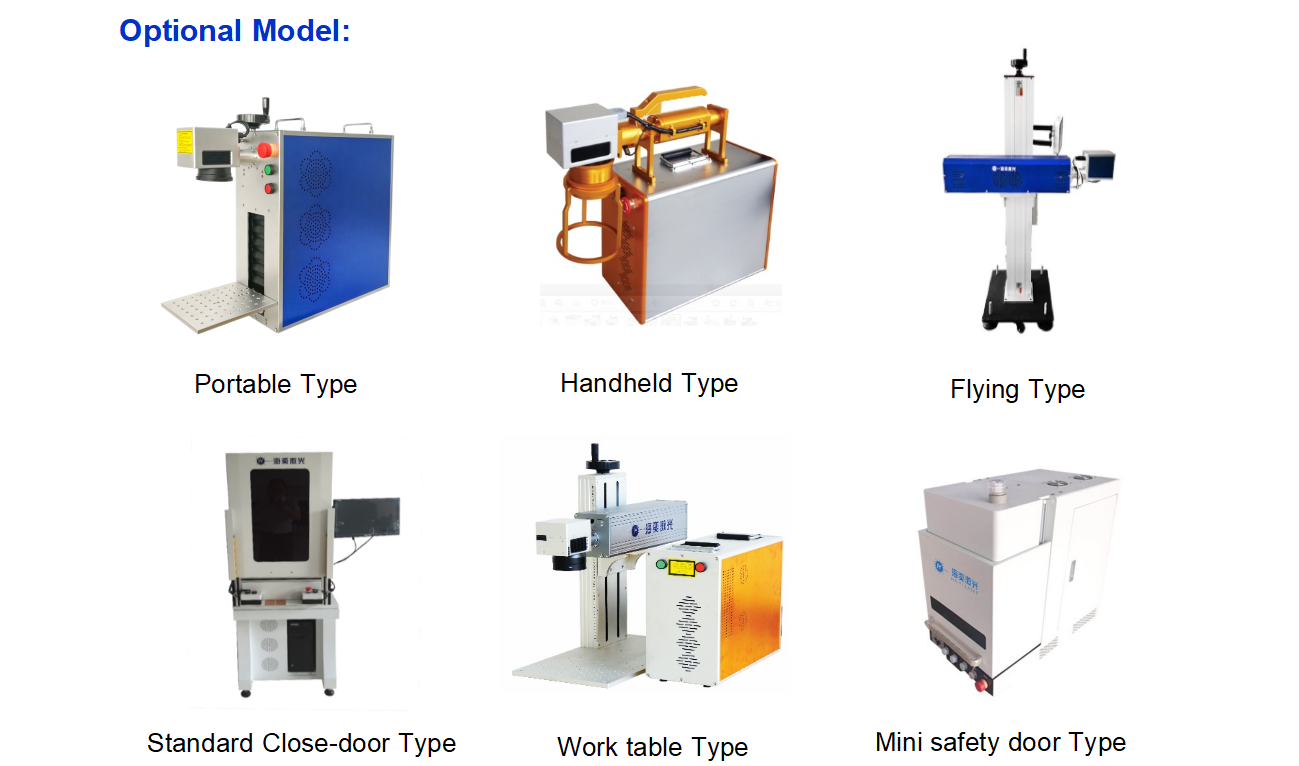WhatsApp/WeChat:
+86 18994470782
+86 18994319892
E-mail:
laserhy@126.com
Jeanyjin@laserhy.com
Address:
Building 14, No.399 Gongtang Road, Luzhi Town, Wuzhong District, Suzhou, Jiangsu, CHINA (215127)

Anodized aluminum blacking application uses MOPA laser to mark and engrave black trademarks, models, words, etc. on the surface of anodized aluminum materials. In the past two years, this application has gradually been widely used by apple, Huawei, ZTE, Lenovo, Meizu and other electronic manufacturers on the shell of electronic products for marking trademarks, models, etc. with black marks. For such applications, only MOPA lasers can process them at present. Because MOPA laser has a wide range of pulse width and pulse frequency adjustment, the effect of black can be marked on the material surface by using parameters of narrow pulse width and high frequency, and the effect of different gray levels can also be marked through different parameter combinations.
Difference between MOPA laser marking machine and ordinary laser marking machine
1. Anodized aluminum blackening application
MOPA laser is used to mark black trademarks, models, words, etc. on the surface of anodized aluminum materials. This application has gradually been widely used on the shells of electronic products by apple, Huawei, ZTE, Lenovo, Meizu and other electronic manufacturers in the past two years, for marking black trademarks, models, etc. For such applications, only MOPA lasers can process them at present. Because MOPA laser has a wide range of pulse width and pulse frequency adjustment, the effect of black can be marked on the material surface by using parameters of narrow pulse width and high frequency, and the effect of different gray levels can also be marked through different parameter combinations.
2. Electronic, semiconductor and ITO precision processing applications
In precision machining of electronics, semiconductors and ITO, fine scribing applications are often needed. Because of its own structure, the Q-switched laser cannot adjust the pulse width parameters, so it is difficult to draw fine lines. The MOPA laser can flexibly adjust the pulse width and frequency parameters, which can not only make the lines fine, but also make the edges smooth and not rough.
3. Application of surface stripping of alumina sheet
Nowadays, electronic products are becoming thinner and thinner. Many mobile phones, tablets and computers use lightweight aluminum oxide as the shell of products. When a Q-switched laser is used to mark the conductive potential on a thin aluminum plate, it is easy to cause material deformation and "convex hull" on the back, which directly affects the appearance aesthetics. With the parameters of MOPA laser with small pulse width, the material is not easy to deform, and the shading is more delicate and bright. This is because MOPA laser uses a small pulse width parameter, which can make the laser stay in the material shorter, and has enough energy to remove the anode layer. Therefore, MOPA laser is a better choice for the processing of stripping the anode from the surface of thin aluminum oxide plate.
Laser type Q-switch pulse MOPA pulse
Laser model Q-switch ydflp-20-m6-s
Laser modulation technology Q-switch modulation electrical signal modulation seed source
The pulse waveform cannot be modulated, and the waveform can be controlled by modulating the signal
Fixed pulse width 100ns 2ns-250ns
Peak power is low, can not be modulated, high, can be modulated
Pulse frequency 20-80khz 1-1000khz
The rise time of the first pulse is slow, and it cannot be modulated fast. It can be modulated.

Model | HY-MFB05 |
Laser Power | 20W/30W/50W/60W/100W |
Laser Wavelength | 1064nm |
Laser Frequency | 50-5000HZ |
Standard Marking Range | 100mm*100mm |
Marking Method | XYZ three axis |
Cooling Method | Air Cooling |
Option Marking range | 180mm*180mm |
Marking Depth | <=0.3mm |
Marking Speed | <=7000mm/s |
Minimum line width | 0.01mm |
Repeatability Accuracy | ±0.002mm |
Power Supply | 220V/50Hz/60Hz |
Total Power Consumption | 500W |
Application:
It is widely used for stainless steel, copper, aluminum and oxidation plating. It is often used in hardware, daily necessities, electrical appliances, mobile phone shell, precision parts, plastic, PC, ABS and other materials.
|  |